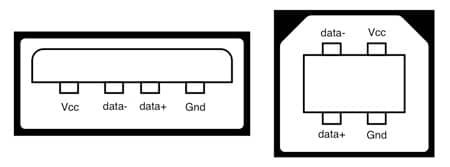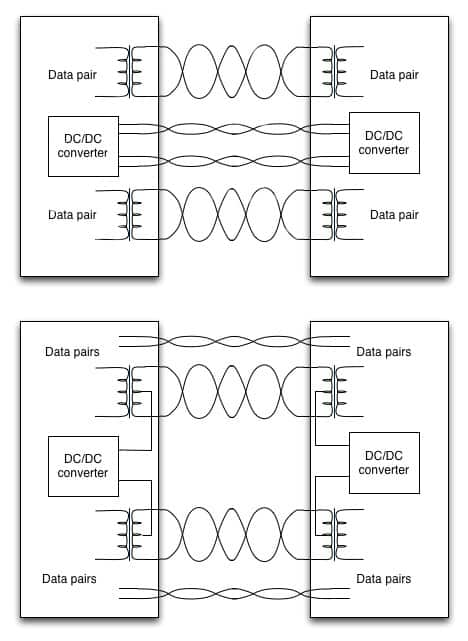Power Choices for Ready-Made Linux Platforms
投稿人:DigiKey 欧洲编辑
2012-12-11
The arrival of high-integration embedded processors based on the ARM architecture has opened up a market for easy-to-use and low-cost Linux platforms. In just a matter of minutes, armed with an appropriate Linux distribution, developers can plug an off-the-shelf board such as the BeagleBoard or Panda Board into a host PC and get started with creating software. The ease of use of these systems means that embedded Linux development need not be confined to professional developers – practically all users can get involved in building home media servers and the core intelligence for robots with very little experience. Even schools are beginning to use these boards to teach elements of computer science.

Figure 1: BeagleBoard layout showing the board’s connectors, several of which can be used to carry power.
The aim of the BeagleBoard initiative, for example, was to provide a wide range of users with an embedded, open-source development platform at relatively low cost. Based on the low-power ARM Cortex-A series processor found in Texas Instruments’ OMAP system-on-chip devices, the resulting embedded computer does not need a fan, which means it can run practically silently. Supporting standard interfaces, an entire ecosystem of supporting products has sprung up and, thanks to published interfaces, users are encouraged to develop their own. Similarly, the Panda Board project is based on another ARM-based OMAP embedded processor from Texas Instruments. Another ecosystem has formed around it. There are also Linux computers that are sold by the silicon vendors themselves for evaluation and low-volume, such as the Sabre and Tower System platforms from Freescale Semiconductor.
As supplied, some of the off-the-shelf Linux platforms come with a power supply. For example, the Sabre platform from Freescale is packaged with an appropriate power adapter. Many other products are supplied as bare boards with the user responsible for selecting a compatible power adapter. Some do not even have a conventional DC input connector. The Freescale Tower System, for example, uses a screw terminal for its dedicated power connection. This need not delay the process of getting the system up-and-running. It can receive power from its built-in USB connector.
The Tower System is not alone in its support for DC power via USB. The BeagleBoard, for example, can receive power from a DC input jack socket or using one of its USB connectors. The USB 1.x and 2.0 specifications both provide for a 5 V nominal supply carried on one of its pins. The current that the USB connection provides is limited, but is sufficient for devices such the BeagleBoard. On USB, a unit load is defined as having a current draw of 100 mA. It is possible for a single device to use up to five units of power for a total of 500 mA.

For higher levels of power, the primary option for users is to employ a dedicated supply that feeds into the onboard power connector. For the BeagleBoard, the connector must have an internal diameter of 2.1 mm with an external diameter of 5.5 mm and be 9.5 mm in length. The main requirement is that the external regulator delivers a 5 V supply – higher voltages risk damaging the electronics.
A power supply that fits the BeagleBoard is the PSC12R-050 made by Phihong. Providing power from a 120/230 V wall outlet, the regulator is designed for use internationally. There are a number of plug adapters supplied with the regulator that allow it to be used in Europe, the US and Asia. The device draws very little power when the board is powered down – less than 0.3 W – and can provide current of up to 2 A, double what is available even with the power from a USB Y-cable.
A supply such as the Phihong PSAC30U provides higher levels of power and is recommended for platforms such as the Panda Board. The PSAC30U is a desktop class power supply rated at up to 20 W, but has a low-power quiescent mode, cutting consumption to less than 0.3 W when the Panda Board or its equivalent is powered down.
Portability is important in a number of applications. The lower energy demands of the smaller off-the-shelf Linux platforms make it possible to have an embedded system that operates from battery power. Accessories such as the Battery Cape from Circuitco Electronics provide the BeagleBone with an easily pluggable, portable power source.
This module provides 5 V power supply to the BeagleBone using up to four standard AA battery cells as well as power controls and indicators.
Powering one of these platforms away from a wall socket, if battery power is not sufficient to keep the system running long-term, need not be a problem. Ethernet provides a further option for powering off-the-shelf Linux platforms. Later revisions of the Ethernet standard make it possible to deliver power over standard category-5 network cabling and coexist with standard communications equipment.
Where USB could supply power over a distance of up to 5 m, Power over Ethernet (PoE) extends the effective length of a power cable to 100 m. The 2003 version of the standard allows for up to 15.4 W of DC power to be delivered at a voltage of 44 V to 57 V. The higher voltage makes it feasible to deliver power without significant losses over the longer distance. A later 2009 version increases the maximum power to 34.2 W with the help of lower-resistance category-5 cabling.
The standard category-5 data cable has four twisted pairs inside but only two of them are used to carry data on the older 10Base-T and 100Base-T Ethernet standards. The unused wires could be used to deliver DC power. The original Power over Ethernet (PoE) standard could not be used for higher-speed networks, such as 1000Base-T, because those split the data signal across all four twisted pairs.
The 2009 version specified a phantom-powering technique similar to that used for microphones in recording studios to deliver a DC voltage over lines that are also used for signaling. The same DC voltage is delivered over the signal lines. This is compatible with 1000Base-T equipment because the core Ethernet standard specifies that transformer coupling be used on all signal lines. DC power can be accessed from the centrer-taps on the transformers at each end.

Figure 3: Power over Ethernet connections for (top) 10/100Base-T and (bottom) 1000Base-T using phantom power.
A number of products are on the market that directly support PoE but they tend to be application-specific, such as voice-over-Internet phones and security cameras. Very few standard Linux platforms have Ethernet ports that will also take DC power. However, this does not preclude the application of PoE to these platforms, even in networks that use switches that do not deliver power over the data cable.
The Phihong POE14 series of adapters can be inserted between a switch and another Ethernet device, generally the device that is to be powered. It splits the power off to a DC power cable that can be plugged into an off-the-shelf Linux platform with a DC jack input connector. The power tips on the Phihong splitter are user-changeable to provide compatibility with a wide range of boards. The 5 V model provides up to 12.5 W of power.
To insert power into the Ethernet cable, an inserter such as the Laird Technologies POE-48I can be used. The inserter takes power from a wall socket and converts that to 48 V DC that is injected into a network cable using a standard Ethernet connector.
Thanks to the support for DC current over a variety of data connections, the options for power delivery to off-the-shelf Linux platforms such as the BeagleBoard and Panda Board are wider than at first glance. USB can provide easy to use power for the development stage with PoE employed for remote deployment, even for boards with a relatively high current consumption, or battery power in the case of less power-hungry platforms such as the BeagleBone.

免责声明:各个作者和/或论坛参与者在本网站发表的观点、看法和意见不代表 DigiKey 的观点、看法和意见,也不代表 DigiKey 官方政策。







 中国
中国